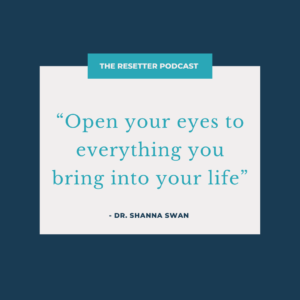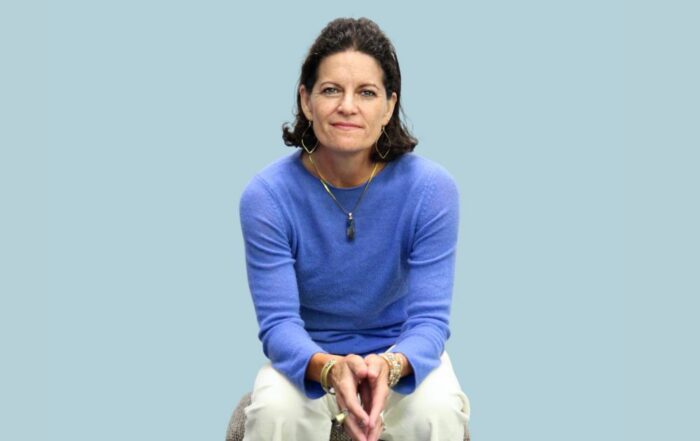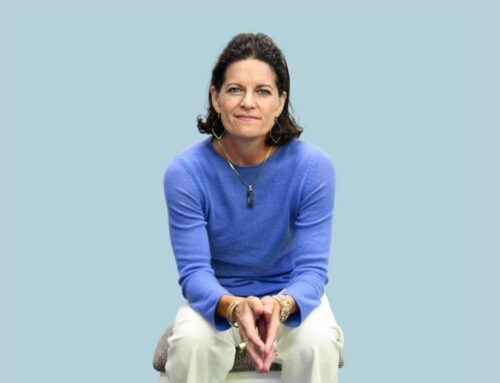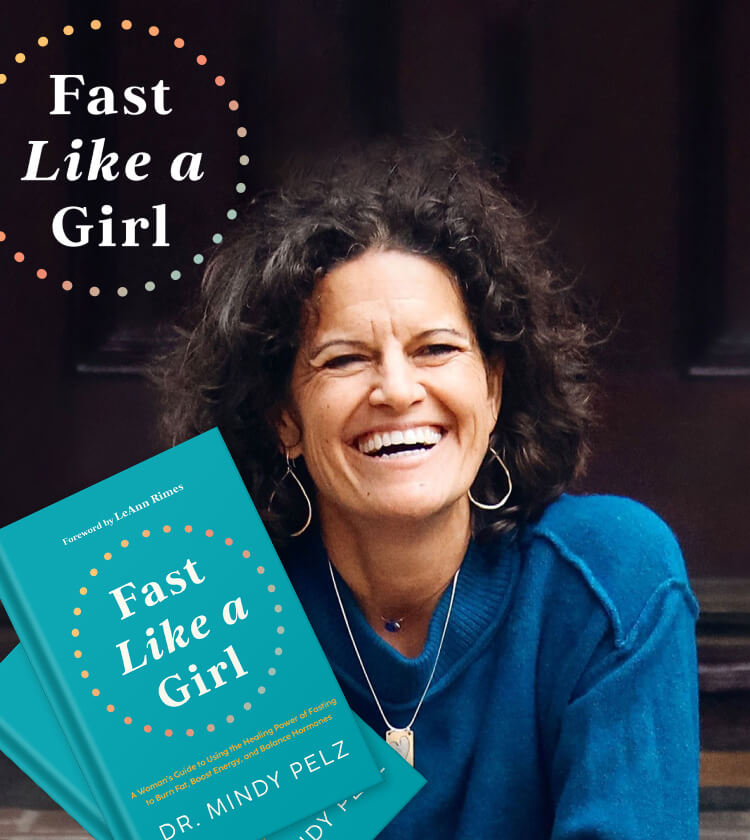“Open Your Eyes To Everything You Bring Into Your Life”
This episode is all about what toxins and plastics are doing to our hormones.
Shanna H. Swan, Ph.D., is one of the world’s leading environmental and reproductive epidemiologists and a professor of environmental medicine and public health at the Icahn School of Medicine at Mount Sinai in New York City. An award-winning scientist, her work examines the impact of environmental exposures, including chemicals such as phthalates and Bisphenol A, on men’s and women’s reproductive health and the neurodevelopment of children. Shanna Swan is the author of Count Down: How Our Modern World Is Threatening Sperm Counts, Altering Male and Female Reproductive Health, and Imperiling the Future of the Human Race co-authored by Stacey Colino and published by Scribner in February 2021.
Stacey Colino is an award-winning writer, specializing in science, health, and psychological issues. Her work has appeared in The Washington Post Health and Wellness sections and in dozens of national magazines, including U.S. News & World Report, Prevention, Scientific American, and Health. She is the co-author, with Shanna Swan, Ph.D., of Count Down: How Our Modern World Is Threatening Sperm Counts, Altering Male and Female Reproductive Development, and Imperiling the Future of the Human Race (Scribner, 2021).
In this podcast, The Hormonal Consequences of Plastics, we cover:
- How toxins are having a dramatic effect on our reproductive health
- Which toxins to look out for and what we can do to clean them up
- About the changes you should make to decrease your toxin load
- Solutions to any of your hormonal problems
What Is Causing The Decline In Sperm Count
Since 1992, sperm counts have been declining, particularly in western countries. There has been a really dramatic decline of more than 50% in sperm counts. Ten years ago, sperm counts were dangerously low – very close to the point at which men can be called subfertile, and couples can have trouble conceiving. The researchers didn’t look into causes, but they suggested possibilities. They said that lifestyle factors could play a role, particularly the obesity epidemic that we are in. In addition, smoking and drinking can create issues. Lastly, chemicals are a massive problem when it comes to sperm count.
Penises Are Shrinking From Hormonal Changes
When mothers are exposed to certain chemicals, babies will have significantly smaller penises. However, this is not the case for adult exposure. One significant danger is phthalates which is a group of chemicals used to make plastics more durable. Dr. Swan got to share the news of shrinking penises with Joe Rogan and his millions of listeners. Although shrinking penises is alarming language, Dr. Swan is glad that people are starting to pay attention to the dangers of chemicals to our hormones.
How To Stop The Exposure To Harmful Chemicals
We come into contact with harmful chemicals in our food, drinks, furniture, everything we touch, everything that we ingest, and what we breathe. If you want to take a comprehensive approach to eliminate chemicals, you must consider all these factors. However, to avoid getting overwhelmed, start eliminating one exposure. Since food is probably the most significant source of exposure, that’s an easy place to start. If you consume fewer packaged foods and ultra-processed foods, you will be doing great. Lastly, buy organic fruits and vegetables.
It’s Time To Ditch The Fragrances
Anything fragrant is going to contain harmful chemicals. For instance, the things you plug into your wall or the air freshener you have in your car. Try and avoid scented products. Your personal care products are causing a high level of chemical exposure. When you get into a car with heavy fragrances, then open the windows!
Regulating Chemical Exposures
We have to regulate these chemicals in the scenarios to which were exposed. Sadly, the regulatory system is really out of whack. The projections for the growth in plastic are even faster as we go forward in the world. We’re facing a challenging time, and I think we have to make a lot of noise.
Why We Don’t Have A Lot of Studies on Women
It’s hard to study women’s physiology. Plus, there has been a cultural bias against studying women. Drugs are metabolized differently in men and women. With Ambien, it turns out that women need a much lower dose than men to have the same effect. Sadly, all the Ambien testing had been done on men, and nobody had looked to see what the response was in women until it was too late. Now, companies are required to test on both men and women.
Dr. Mindy
Why did you choose now to bring this information to the world?
Dr. Shanna Swan
So the paper we published in 2017 was the trigger that got a lot of press worldwide a lot of attention. It led to an agent contacting me, literary agent and asking if I was interested in writing a
Dr. Mindy
book about this. Okay, so tell us a little bit about that paper. What was what give us a little background on it? What was the science behind it? What did you discover?
Dr. Shanna Swan
So what we, what we discovered in the 2017 paper was that, as had been reported, for a long time, actually, since 1992, sperm counts were declining, particularly in western countries. And what was special about this paper and why it got more attention was that it was much bigger, it was much more rigorous, because the methods which are called meta analysis methods were right available them they hadn’t been back in 1992. And, um, yeah, so it just showed this really dramatic decline of more than 50% in sperm counts. And it also showed that the levels at which men were and 2011, which is, by the way, 10 years ago, now, we have to remember that we’re already pretty low, dangerously low, very close to the point at which men can be called subfertile or couples, you know, can have trouble conceiving. And there’s other spin offs from that low sperm count as well, which we can talk about. But in any case, it did garner attention, which hadn’t been the case for the earlier studies. So
Stacey Colino
in that paper, and I know this, because I read it, and I reported on it for vice, they didn’t look at the causes, but they suggested possibilities. And they said that lifestyle factors could play a role, particularly the obesity epidemic, that we’re in smoking, binge drinking a whole array in that arena. And then in addition, chemical exposures expose chemicals in our midst in everyday life, could be affecting this. And so that became a big part of the focus for our book. Okay.
Dr. Mindy
And I was pretty impressed in your book about how much information you gave about different chemicals and the effects of these chemicals. How is the book been received? I mean, obviously, people like me who are dealing with really sick people that are trying to get people well appreciate the level of science that you delivered. But has the world received this book? Well, like are people open to this topic?
Dr. Shanna Swan
Surprisingly open? I think the most the biggest surprise, I don’t know if you know who Joe Rogan is? I sure do.
Dr. Mindy
Yeah.
Dr. Shanna Swan
So that that kind of gives said to me that people are open to this because he was open to the message. And he was like, wow, how come? We don’t know this? How come people haven’t heard about this? And that’s the reaction that we’re getting over and over again, how could people not have known this? So that was great. And we got some pushback. Minor, actually, I mean, compared to the incredibly positive response, we’ve gotten worldwide.
Dr. Mindy
And do you feel like people are getting motivated as they’re reading your book, because toxins can be a very depressing subject. And the way that you lay it out, it really is clear that we are moving in a very negative direction as the human as a human species. Do you feel like people are motivated? Are they in a quandary as to what to do next?
Dr. Shanna Swan
I think all of the above. I mean, I think this has gotten the concern they want to know. And as we talked about in the book, you know, things they can do. And I think they’re also we ended on a positive note, as you know, from the book, we do feel like there are things that people can do and what we’re hoping is that by educating ourselves and others, that we can make the changes that we have to make to this round. Yes, in terms of regulation in terms of chemical production, in terms of personal exposures. What do you think, Stacy? Do you think people are motivated,
Stacey Colino
they’re motivated, but they’re also very intimidated, and they find the prospect of changing these exposures in particular, really daunting. And so people will say, um, you know, in interviews, and on podcasts and so on, well, where do we start? And how much of a difference does it really make? And they worry about that, and one of the messages that I keep saying is just start somewhere, do one thing. And everything that you do to protect yourself from these chemicals or to eliminate a particular exposure will reduce your body burden of these chemicals. And so one of the messages that I keep hammering is don’t let perfect become the enemy of good, every step you can take in the right direction is going to be helpful.
Dr. Mindy
Yeah, well said Well said, What do you think, give us sort of a category of chemicals that that are causing low sperm counts? Is there a category that we need to focus on? Or is it just the abundance of all chemicals in our environment?
Dr. Shanna Swan
Well, the the chemicals that I’ve studied most are the chemicals called salad. These are so important for sperm count, because they have the ability to lower the body’s androgens or testosterone. And because testosterone plays a critical role in male reproductive function and female, by the way, but it’s what we’ve studied most is the male, that it’s very important to look at chemicals that are anti androgenic, or can lower testosterone. So that’s one class I might, you know, I go and we go into great detail on how the science was laid out. But there’s also a lot of evidence that pesticides affect sperm count, both at the level of you know, environmental exposure, also occupational exposure, and now there’s more evidence coming up for the bisphenols and reproductive function. So I think all of the classes that females, salads, pee fast chemicals, those are those barrier chemicals and flame retardants, as well as pesticides, are all playing a role in this problem.
Dr. Mindy
And do you see that people are in daily contact with these chemicals? Is it a bio accumulation, where we’re just getting a barrage of them from our furniture, to our clothing to our foods, and it’s just the bio accumulation that is really bringing the sperm counts down?
Dr. Shanna Swan
I wouldn’t say bio accumulation, because that suggests that they stick around, and most of them don’t. That’s the interesting thing about these. And one of the good news parts of the story is that most of these chemicals are not the forever chemicals, they’re not the chemicals that are stored in our fat, and, you know, but we there is accumulation, because we’re exposed to so many of them simultaneously. So if the CDC took your urine today, and measured it, they would measure probably 100 chemicals, all most of the 100 they look for will be found in your body right now. And you don’t know that. I don’t know that they’re Stacy’s body. We all have our bodies. And we don’t really know what the mixture of all these chemicals are doing to us. So I wouldn’t say accumulation over time, I would say maybe simultaneous exposure to a lot of them that is concerning. And just a barrage
Stacey Colino
is the right word here. Because it is constant. So even if these chemicals Don’t linger in our bodies for a really long time into the future. It’s an ongoing assault day after day after day. And there’s no end in sight. There’s no relief in sight. Yeah. Because we’re not most of us are not even aware of what we’re exposed to on a daily basis. Yeah,
Dr. Mindy
you talk a lot about how the womb used to be thought of as being a protective place. What I’m heard in the book, that’s not the way we need to look at the womb now.
Stacey Colino
Not at all. You’re absolutely right. Yeah, it’s not there is no separation. What goes into the mom goes into the baby as it’s developing.
Dr. Mindy
That’s crazy. And is that toxins that have been in her prior to getting pregnant? Or is that during her pregnancy, that she’s the most vulnerable? Is it really?
Dr. Shanna Swan
That’s an interesting question. I don’t. So the studies that look into those, ask what’s in the mother right now? Because that’s what we know. We can get the urine, we can get the blood. That’s how we know what’s in them. But what was in them five years ago? We don’t know. So those past exposures may well have affected the quality of her eggs in a way that play out in this pregnancy. But we might be able to measure them because we don’t have those old samples. So that’s a really, really good question. And one that I don’t think we have many answers for. The other
Stacey Colino
element there that that plays in here is men essentially get a chance to do over every 72 days, the slate can be wiped clean if he cleans up his lifestyle habits and his chemical exposures, and he can improve the quality of his sperm. But women don’t get that chance. Once the eggs are damaged or their numbers decline, that’s it. new ones are not going to.
Dr. Shanna Swan
Yeah, and I just like to add add one caveat, which is that if there were changes that were induced when he wasn’t in utero, he can’t fix those, he can only fix the damage from exposures during his recent past, right? If, as we showed a valid exposure to that male, when he’s in utero can alter his, for example caused him to have a smaller penis. Let’s just take. That’s right. Everybody hates that one. So, you know, suppose he has a slightly smaller penis, because of those ballads. That’s not going to change. There’s nothing he can do about that. And no matter how much he cleans up his act, it’s not going to change and control effects of his own smoking his own eating his own drinking, but not his prior, you know, in utero exposure.
Dr. Mindy
Yeah, yeah, prior to your book coming out are about the same time I’ve been following Erin Brockovich and the work that she’s been doing. And she I’ve been following that for many years. But she came out with an article, I don’t know if it was timed perfectly with your book. But the title was shrinking low sperm count and shrinking penis says is something like is what the human race is dealing with now. And what I loved about your explanation in the book, and I’d love for you to share it with my listeners is why it’s the penises are actually shrinking from hormonal changes from toxins, because this is a huge, and potentially maybe why Joe Rogan invited you on to his podcast because you went right into a pain point. You’re gonna have so explain to us how
Dr. Shanna Swan
he came from this. Yeah. So I mean, I think saying shrieking penises is alarmist, but that’s fine. I don’t mind some alarmist language around all this gets people’s attention, right. But what it is, is that when the mother is exposed to higher levels of certain talents, then the babies we measure their penises, okay, we measured them at birth or the first year of life. And we saw that when those levels were higher in the mother, the babies had statistically significantly smaller penises. And that’s likely to stay with them their whole life. So it really is, in some sense, shrinking penises, but that’s not the case, as far as we know, for an adult exposure. Right, right. It’s for when they’re in utero. So yes, it is a story. And Joe Rogan called me the what is it called me the Paul Revere of tiny penises makes because the taint the distance from the anus, the genitals, which is a three term taint, or goo juggernauts that also get smaller. And so he loved that. And that was?
Dr. Mindy
Well, I saw, that’s funny. So I saw her article, and then I saw your guy’s book. And I was like, Oh my gosh, because we’ve been dealing with toxins in our community for a while really trying to help people detox this stuff out. And I thought, Okay, well, now we have everybody’s attention, because we’re talking shrinking penises. So now everybody wants to listen to this scenario that’s going on. But I would hope that infertility is big enough of an issue right now that it’s waking people up. And you said something in the book about women who are in their 20s have are less fertile than their grandmother was explained that scenario, because that I think, is dramatic to know what’s happening to our reproductive health. Well, let
Stacey Colino
me just sort of set the backdrop here, people assume that a big part of this is because men and women are waiting longer to try to have babies that age is taking a toll on reproductive function. And that may be true, but that particular statistics show, what we said was that women in their 20s are less fertile than their grandmothers were in their 30s or at 35. And so that shows that it’s not just age, it’s what we’re exposed to in the world. And grandma had a cleaner world so you know, fewer chemicals to be exposed to and so on. And so she was protective. The One of the interesting things about that is that yes, age does play a role. Women’s eggs die off and her chances of conceiving and carrying a pregnancy to term healthfully go down as she gets older, her risk of miscarriages goes up. But the interesting thing about the toxins and the chemical exposures, is they have a bigger impact as women get older.
Dr. Mindy
Hmm, how come explain that a little more? Shawna? I’ll let you jump in here.
Dr. Shanna Swan
Okay, so that actually is something that we’re just researching. Now. I have to say we believe that’s the case. There’s not a lot of evidence for up there. is some. And the reason is that vulnerable populations of any kind are more affected by environmental exposures, for example, disadvantaged communities, poor communities, communities in ill health, and so they’re affected more, and older people are affected more. And so since the general principle is that sensitive, people who are already at risk from other factors like maybe stress or poor diet or, you know, an aging, aging, in this case, but I’m just saying in this general principle that, you know, they are the impacts of chemicals are greater, because they’re people already sensitized, if you will, to, to, you know, they’re in a more risky place in the curve,
Dr. Mindy
do they have the body just struggling to adapt? If you’ve, the longer you’ve been on the planet, the more chemicals you’re getting in contact with the, the human body is meant for self repair, but after a while, the barrage of chemicals, makes it harder and harder to adapt? I think that’s right. Yeah. With that. And would you say that we’re the, this was the other really interesting thing that you guys so eloquently discussed in the book, and I just really give you hats off for this is that the generations that’s growing up? You touched around the toxic piece of that? Can you talk a little bit about how these toxins, if they’re affecting us in the womb? Are they affecting these children when they come out of the womb? Well, for sure,
Dr. Shanna Swan
so I mean, though, Kim, the hormones that are not down or increased, you know, by these chemicals are going to have effects on the entire body, including the
Dr. Mindy
brain, including behavior, including obesity, you know, there are things that these are being called obesogens, including immune response, and so on. So it’s not it’s their entire body. We’ve seen, we deal with a lot of families where we’ve got women that are going into menopause at 35, we’ve got a 13 year olds that want to commit suicide. And when you start to see this generational imbalance of health problems that we didn’t see at are at that age, you have to wonder if it’s an IT, there’s an environmental piece to it. Because it’s too fast to be genetic. Raistlin Yes, yeah. Yeah. So explain to me a little bit about what chemicals we can start to make an impact. Like, if you’re listening to this, I don’t want to just scare everybody, I want to make people awake. But what can we do? What chemicals Do we need to look out for? And how can we move ourselves into action on this?
Dr. Shanna Swan
So maybe I’ll just say a little bit about where they’re found in there. Maybe Stacy can talk about actions. Okay, so um, so they’re found in our foods. And so that could be pesticides. It could be the salads, it could be seino, in tin cans, salads and food packaging, and maybe came in the processing of the foods. And they’re also in our household products, for example. I’m not sure. Are you in New Zealand? Yes,
Dr. Mindy
no, I’m in California, I’d like to, I’m not sure why. Maybe the time that I’m in New Zealand, that’s
Dr. Shanna Swan
Well, the reason I said New Zealand is because in the US we don’t use a lot of polyvinyl chloride in floor coverings and wall coverings. But in Europe, we they do, and they have very high exposure to these chemicals foulards and particularly in their from their living surroundings. And they’re also in our furniture they’re in are everywhere in our lives. And now Stacy will tell you about how to get rid of them.
Stacey Colino
We come in contact with them. As Shauna mentioned in our food and our drinks, in our furniture, everything we touch, everything that we ingest, and also in what we breathe. And the reason I mentioned TVs, is, unbeknownst to us TVs emit flame retardants, and they take precedent on our house residents in our household dust. And we ended up inhaling them when they’re in the air and we touched them when we clean or dust, that kind of thing. So, um, if you want to take a wide approach to this, you have to address all of these factors. As I mentioned earlier, I really recommend that people start with one thing and since food is probably the biggest source of exposure, that’s an easy place to start. If you Consume fewer packaged foods and ultra processed foods, foods and stick foods in their more pure and original form. Try to steer clear of pesticides by organic when it comes to certain fruits and vegetables, we recommend following the Environmental Working Groups advice on this front. That’s a good start. Personally, one of the biggest things that I did after working on this book with Shauna was I assessed our house and got rid of a lot of plastic, plastic in our kitchen, do not use food containers that have plastic, instead swap glass containers or metal containers. Likewise, water bottles, ditch the plastic go for metal. And the more you can do those things, the better. dusting regularly as important. I’m looking at the labels of the products you buy, whether it’s personal care products, cosmetics, household cleaning products, and looking for the chemicals that we outline in the book. And we have a whole list of things that you should put on the do not buy list. And that’ll help reduce your exposure as well. So it’s kind of a multi pronged approach. And steps add up.
Unknown Speaker
That might just add fragrances please. Oh, we haven’t talked about fragrances. Yeah,
Dr. Shanna Swan
so anything fragrance is going to contain dye beautiful, like one of the matte ballads and female. So particularly, you know, stuff you plug into your wall air fresheners or hanging in your car. Just try to avoid scented products, because we asked women you know what they use in the 24 hours before they gave us their urine, they will let you know checked all the boxes. And then we showed that what they were, you know, their from their personal care products. If they were fragranced. They had high levels of these exposure. So
Dr. Mindy
yeah, that’s the end. And then what do you do when you get in an Uber and the Uber driver has a heavy Cologne and a Christmas tree air freshener? You pull out a copy of your book. Open the windows? Yeah, I actually I actually what I do is I open the windows two, but if they don’t have that, I actually compliment that so that it like reinforced the positive behavior because I can’t sit inside a car with a heavy cologne. It’s I feel like I could pass out. Yeah, yeah, it’s crazy. Okay, let’s talk a little bit you you mentioned earlier about forever chemicals. And I will tell you here locally, in a really nice neighborhood about a year ago, there was a letter that went to all the residents saying that, hey, by the way, you’ve got forever chemicals in your water. And it’s known to cause thyroid problems. If If forever chemicals don’t go out of the environment forever, what do they do in our body? And where are we getting these other than water?
Dr. Shanna Swan
So they’re, they’re they’re, they’re the historic forever chemicals. That was we’re probably not what the letter was talking about. Those are things like DDT and PCBs, and dioxins, which were the Stockholm convention banned those, even though the US didn’t sign on to it, people who really reduce their exposure to those things, their use of those things. But but the P FOSS chemicals are our call forever chemicals, even though they’re not, they don’t have the same HalfLife as things like detune, PCBs, they do stick around, and they stick around in our fat. So chemicals will either be distributed, you know, either water soluble or fat soluble, roughly speaking. So they’re either go into your fat or into your urine and the forever chemicals will be going into your fat. And so
Stacey Colino
they will go into the fat of animals that some of us eat. Exactly, exactly. Right.
Dr. Mindy
Wow. Yeah. And do you have you seen research? I’ve seen some studies showing that it it forever chemicals affect our immune system? Yes. Yes. What’s what’s the impact of all of these chemicals on our immune system at a time when we need our immune system to work? Its best?
Dr. Shanna Swan
Yeah, that’s a good time to ask that question. Right? And everyone stays in the Faroe Islands where they looked at some of the forever chemicals and showed that children that were more highly exposed had fewer antibodies. So I don’t know that anybody’s looked at that in terms in relation to COVID. But it’s it’s a really interesting question. And one that I’m sure will be researched,
Dr. Mindy
you need to you need to research that one now. In my spare time, I tasking you with Do you think that there are certain countries that have more leniency around the chemical are allowed to be sprayed on foods and put into our environment than other countries are. is America one of the worst? are other countries doing better than us?
Dr. Shanna Swan
I mean, I, the EU does better. EU is made. There’s a chemical strategies policy now, which is really quite good. There’s an older policy called reach, which requires that a manufacturer test a product before it’s put into commerce, which is, of course, the way it should be, rather than having us be the guinea pigs to test the products. Yeah, but I can’t speak about the whole world, because those are the two areas that I know something about the EU regulations and the US regulations. And I do know that the US regulations don’t protect us very well. Yeah, yeah. Here’s, let me give you this example. 700 chemicals banned from cosmetics in the EU. 11. Chemicals 11 banned in the US? Yeah, yeah.
Dr. Mindy
I thought yeah, do you know, I think that is what needs to change. Because it’s not fair. If I walk into a market and I buy something, I should say, I should be vetted for my safety,
Dr. Shanna Swan
should it not? Absolutely. And right to be angry, and I wish more people were, yeah, people
Stacey Colino
that it is you trust the government and assume that they’re looking out for us, and that if it’s available, it’s safe. And what they don’t realize is that chemicals in our culture are presumed to be safe, until they are proven to be unsafe. And that happens after they’re in widespread use. And even if that happens, at that point, it’s really hard to reverse things and get those chemicals off the market.
Dr. Shanna Swan
Oh, when you do, and even when you do, what they can do is come along and put it in a no substitute substitute, which serves the same function has a different name, but has the same harm. So BPA is substituted, take that out, put in BPF, or bps? It’s really not fair to the consumer. Yeah.
Dr. Mindy
And do you think when we start to see things like infertility and early puberty and things like that emerging from a toxic issue, that our go to at that point is to treat it with more synthetic medications? Because that’s what our healthcare system is built upon? Oh, yeah. So I hear you, I hear you. So it’s like we’re banging our heads against the wall while people are suffering? How do we, I feel like it has to start at an individual level. So help my audience understand outside of just be mindful of the food you eat and what you bring into your house. But how it’s a vicious cycle that feels like we’re going nowhere, we’re only getting sicker? How do we undo that?
Dr. Shanna Swan
I think we have to regulate these chemicals at the scenarios to which were exposed, which is not what’s done now. So the regulate regulatory system is, is really out of whack. Let’s put it like that. And stepping back from that, we have to, and this is not for you and me to do but manufacturers and chemists have to produce plastics, which are made from other products than fossil fuel. You know, buy products, which is what they’re now using. And this is really scary right now. Because with good action to decrease the dependence on fossil fuels for our gasoline and heating our houses. There’s all this fossil fuel, and we’re only going to put it you’re going to put it into plastics. And the projections for the growth in plastic is is even faster as we go forward as the use of fossil fuels for heating and air and transportation is going down. So we’re facing a really difficult time. And I think we have to make a lot of noise to Yes,
Dr. Mindy
yes, yes, a grade. That’s why you should have heard me when I read your book, I was screaming out loud and nobody was around except my husband was like, Oh, my God, they said this. Yes. This is what we’ve been saying. So Shawna, I have you brought something up about the mouse, the some of the mouse studies, I’m just have a science question for you. Can we look at a mouse study and make the correlation in the human body? Or is it are we dealing with, it’s just too difficult to make that direct correlation.
Dr. Shanna Swan
So it is true that the models, the particular animal that they use, for this outcome might be different than you know what you’d use for a different outcome because not every animal is a good model for human physiology in every part of the body. Right. But as far as reproduction goes, um, and rodents are very good models for some pregnancy. They’re not good for pregnancy. outcomes because they have big letters, for example, so you wouldn’t want a road model to tell you about, um, you know, miscarriage. They don’t have them, right. But you might go to a sheep, a sheep is a good model for miscarriage. So it depends what is the outcome that you’re looking at, right. But they’re definitely relevant. And for me, they’re so important because in an animal study, you can do random assignment. That means you can talk about causation. So when you do a human study, the people who use and don’t use a certain product are going to be different in many ways, besides their product use, maybe their higher education, maybe their lower income, whatever, whatever, all these differences, they’re called observational studies, because we just have to take people as we find them. But an animal study is an experiment. And so you can assign, you know, the placebo, and you can assign the treatment, and you can do it at random. And all of those problems from an observational study are gone. And you can use the word causation. So for me, the ideal is, you have the animal model, you have a human model, when they agree, you get the same results, like we showed for the valley effects on the genitals, then you can say causation in humans as well. So so that’s the gold standard.
Dr. Mindy
So it’s like a multi step process. Exactly. Yeah, exactly.
Dr. Shanna Swan
So if you start actually, with structure of the chemical candidate, reduced testosterone candidate increase estrogen, what is it structural? What does it look like? Does it look like another known antiandrogen? For example, I’ll give you an example. We found a couple of years ago that the common analgesic, Tylenol shares, Structural Function with salads, that in fact, the most antiandrogenic phallic, very similar, and I’m glad now we’re learning that it’s having the same effects. But you start with the structure, and then you do the animal studies, and then you do the human studies, and then you replicate the human studies. And when you put that all together, then you have a good picture of causation.
Dr. Mindy
Yeah. Yeah, it’s well said, and I, the reason I ask it is, in the fasting world, I had mentioned when we first started that a large part of my community fast together, and there’s a lot of incredible research on fasting, much of it is done on mice. And some of the criticism is, but that’s not a human study. And I always say, but it gets us in the ballpark, it gives us an idea of potentially what’s going on here. Is that accurate? To say that I think
Dr. Shanna Swan
it does a lot more than than get us in the ballpark, I think it tells us a lot about mechanism, it tells us how this all works. physiologically, if we don’t have because in animals, we can do things you can do in humans, you know, you can actually see, you know, measure the testosterone going down, you can actually, you know, do a lot more than you can do in humans, so we can get a mechanistic explanation. And most importantly, I think, is that you can administer the exposures at will at the doses you want at the timing you want, which is very important. You can control all that. And then you know, what matters. So if you want to know at what point in pregnancy, does it matter if the mother is exposed to a family? That’s a good question, right? Maybe it turns out, it matters a lot in the early first trimester, and hardly any, in later, developers, dad. In fact, in rats, it’s a five day window that it matters. So you won’t know that unless you have the animal model. So they’re already valuable and valuable.
Dr. Mindy
Well said. And you mentioned it in the book, that we don’t have a lot of studies, as many studies, women only studies that were we’re actually just looking at women separate from men.
Dr. Shanna Swan
Why is that? It’s hard to to study women, women’s physiology, reproductive physiology is much more difficult than for men, but also, there has been a cultural bias against studying women. And it was really surprising. in about five years ago, the NIH came out and said, You must include women in your studies. You must include imagine until then, you could do all your research on men only. And a great example of this is the fact that drugs are metabolized differently in men and women. So there’s a famous example of Ambien, though sleep medication. Turns out that women need a much lower dose than men to have the same effect. And there was a terrible, you know, example on TV where a woman had a, I think, a fatal or serious accident from having a male dose of Ambien and they investigated and they found out that all the testing had been done on man, and nobody had looked to see what the response was in women. So then, and I said oops, Now we have to start studying these things.
Dr. Mindy
Right? Well, I there again, I go back to the fasting model, there was a study that came out recently saying intermittent fasting is not a good tool for weight loss. And when I dove into the study, they had the sample size was nicely it was a large sample size. But it they had 19 year old men and 55 year old women all lumped into right into one study. And I was like, I pour a 55 year old woman trying to lose weight compared to a 19 year old man, like, we can’t make that that equal correlation. So yeah, awesome. Okay, I’m finishing up, I’ve got five questions, rapid fire questions for you guys that are kind of unique to your life and what you’re doing. And Stacey, why don’t we start with you. Because you talked a little bit about avoiding these chemicals. Let’s say you’re going to go buy a piece of furniture. And you know, there may be some off gassing on it, you know that it may have some flame retardants on it. What are the best practices you use to make sure that you’re not bringing in toxic chemicals, like on furniture in your house?
Stacey Colino
Well, first, I would find out what it has been treated with. And I might choose a different couch. For example, if the one that I’m interested in is loaded with chemicals, with some of the off gassing issues, one of the things you can do is if you have the physical setup, is put it in a garage with the door open floor, put it on a deck and let it air out. You can do the same thing with your dry cleaning, for example, and let those chemicals air out so that when you bring the item back into your home, there’s less release. Yeah,
Dr. Mindy
I do that I put it out my backyard. I live in California. So I put in my backyard. Shawna, what about you? Anything you would add to that? I would just say I’m usually have a filter. Okay, what I’m, Shawna will go back to you. If there was one person right now on the planet that you feel like could make the biggest change in policy around chemicals that are being dumped in to our environment? Who would that person be? And what what would you want to tell them? That’s too hard. I mean, I grew up I guess, like, I guess being an American, I would want to have a Joe Biden. Okay. What would you tell him? What would you tell him?
Dr. Shanna Swan
I would tell him that he should look into a camel. The chemicals are regulated now. And listen to the scientists that are questioning these old outdated methods, because they’re not protecting people’s health.
Dr. Mindy
Yeah, well said, Stacy, any, any any different version of that you
Unknown Speaker
would say?
Stacey Colino
Well, there’s some celebrities who have been very vocal about some of these. And I applaud their efforts. I would like to get more to do that people who are in the public eye to come forward, maybe we should enlist Oprah’s help. I mean, the more people who chime in who are influencers, the better. Yeah, agreed, agreed.
Dr. Shanna Swan
And I had Michelle Obama, because she’s very, very good about foods and the foods given to children and the way foods are grown. And I think she would be very receptive to the message about keeping these chemicals out of our foods.
Dr. Mindy
Have you sent her your book? No, I don’t know how. I don’t know either. But I feel like you should. So speaking of books outside of your book, if somebody’s listening to this, and again, I’m just going to emphasize to our listeners, your book is on my list of top five books, everybody should read. What other what other books on toxicity Do you feel like people would benefit from?
Dr. Shanna Swan
Well, I would go back to our stolen future. I mean, it is an older book. It’s 25 years old, but it’s really was groundbreaking and it still has information that is not old. And I, you know, it’s a really go to book so I highly recommend it. Okay, awesome, Stacy.
Stacey Colino
I would add slow death by Roberta. It really shows how quickly you can make progress, and how quickly you can harm yourself, potentially.
Dr. Mindy
Yeah, amazing. How can you read me say that again? And it’s fun to read. It’s a good read. Yeah, great title. It’s really good title. Suzanne Somers has a really good book that actually opened my eyes called toxic and it’s all about how toxins, it’s the correlation of how it’s making us sick, and it comes from a little more cancer perspective. So okay, last two questions. It Shawn, I will go back to you if you were having a conversation with a young woman about to get pregnant. And you wanted to impart your thoughts about toxicity and how to protect her baby, what would you say to her?
Dr. Shanna Swan
recounting? Because they’re saying many, many things that she shouldn’t be aware of. And I couldn’t begin to tell you them all right now, but I think she would enjoy it. And she would learn something.
Dr. Mindy
Yeah. Yeah, a great.
Unknown Speaker
What about you,
Dr. Mindy
Stacy?
Stacey Colino
I would agree with that, because there’s so many, excuse me, chemical exposures that we have that we’re unaware of True story. When I was pregnant with my second child. I read a report of one of Shawna studies about that late exposure during pregnancy, and a short a GED. And of course, at the time, I didn’t even know what an egd was, this is no genital distance. And then the Environmental Working Group came out with a whole report about hazardous beauty products. And I put the two together, and I looked it up and I looked up the brand of nail polish that I had put on my toes at the beach, and freaked out. Because it was on the list. I was four months pregnant with a boy. So the nail polish came off, and I didn’t put any more on the rest of my pregnancy. I haven’t measured his aegd. But I think he’s fine. You don’t know what you don’t know. Until you get this book. And until you look at the science, yes,
Dr. Mindy
yeah. And then did you take a toxic nail polish remover to get it off?
last thought, and you guys have been great. I really have enjoyed this. What Shauna, if you had one message for the world that you could get into everybody’s brain just implant that thought? What would it be?
Dr. Shanna Swan
Um, I think that would be that you need to open your eyes to everything you bring into your life with an eye to its risks for damaging your health.
Dr. Mindy
Yeah, I call it toxic lens. I encourage our community just really put your toxic lens on and start to see everything you’re buying everything you’re interacting, ask yourself what the toxic piece of that might be. That’s, that would make a huge step, don’t you think? Absolutely. Yeah, I like that. I like Stacy, what What about you, if you could get one message and everybody’s brain?
Stacey Colino
I would go with what you’re saying what both of you are saying I agree with it wholeheartedly and you know, educate yourself. That’s really the best thing you can do. Because this is a complicated subject. And we don’t learn this in school. We don’t it’s not common sensical. We don’t know these things. And so it’s really about getting information into your hands and into your mind and learning sharing it and sharing it without it. Yes, absolutely.
// RESOURCES MENTIONED IN THIS EPISODE
- Feel the impact of Organifi – use code PELZ for a discount on all products!
- July Fat Burner Reset
- Book: The Countdown
- Book: Slow death by rubber duck
- Book: Our Stolen Future
- Book: Tox-Sick
- Favorite “Clean” Household Cleaning Products
- Favorite “Clean” Beauty Products
- HEPA Filter Vaccum
// MORE ON DR. SHANNA SWAN












Leave A Comment